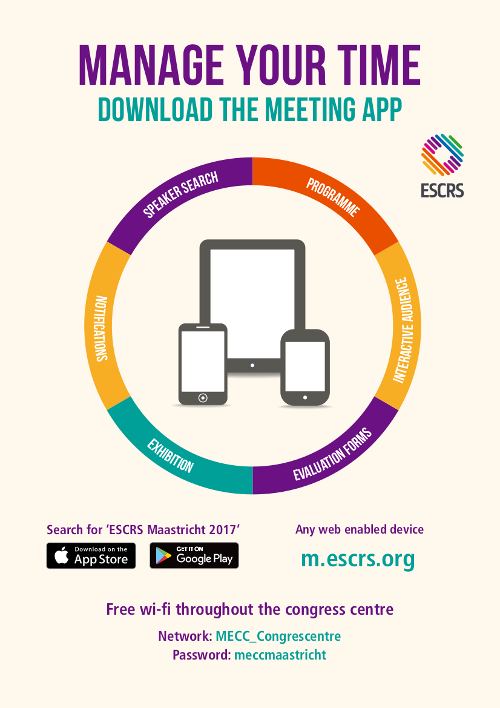Posters
(results will display both Free Papers & Poster)
Introduction of a new diffractive trifocal intraocular lens: comparison with a former diffractive trifocal IOL
Poster Details
First Author: S. Hübsch GERMANY
Co Author(s): D. Breyer H. Kaymak K. Klabe P. Hagen F. Kretz G. Auffarth
Abstract Details
Purpose:
Ring patterns in diffractive MIOL can be designed such that the first order diffraction coincides with the zeroth, effectively improving the far focus of the lens. Within this retrospective analysis we evaluate the visual outcome and quality of vision after implantation of such a new diffractive trifocal IOL and compare the results with those of a former trifocal generation.
Setting:
All MIOL implantations were performed at the Breyer-Kaymak-Klabe Eyesurgery in Duesseldorf, Germany, which is part of the International Vision Correcton Research Center (IVCRC.net).
Methods:
This retrospective quality management investigation comprises results after bilateral implantation of the new trifocal aspheric AcrySof IQ PanOptix (Alcon) in 15 patients and of the (bitoric) trifocal AT Lisa Tri (Carl Zeiss Meditec) in 80 patients. Follow up exams have been performed monocularly. Each eye was documented seven days postoperatively. Binocular exams followed 1, 3 and 6 months after surgery. Manifest refraction, defocus curves, halos & glare assessment and a patient questionnaire were documented.
Results:
The mean postoperative UDVA at 3 months was < 0.05 logMAR. UIVA < 0.1LogMAR and UNVA < 0.2logMAR were comparable between both IOLs. The defocus curves showed a peak at far distance transitioning into a plateau at around 70 cm. The target refraction (+/-0.5D SEQ) was achieved in all patients. No postoperative IOL rotation or change of refraction occurred. Halo & Glare were significantly higher than in phakic eyes but predominantly described as undisturbing. The questionnaire revealed a high patient safisfaction: 95% of patients would choose the trifocal IOL again.
Conclusions:
Considering life style aspects of most of our patients in case of a computer-based daily routine, as well as menage, handcraft or night driving, both diffractive trifocal lenses accomplish patients’ needs better compared to the former bifocal generation IOLs.
Financial Disclosure:
receives consulting fees, retainer, or contract payments from a company producing, developing or supplying the product or procedure presented, travel has been funded, fully or partially, by a competing company, travel has been funded, fully or partially, by a company producing, developing or supplying the product or procedure presented, receives consulting fees, retainer, or contract payments from a competing company



